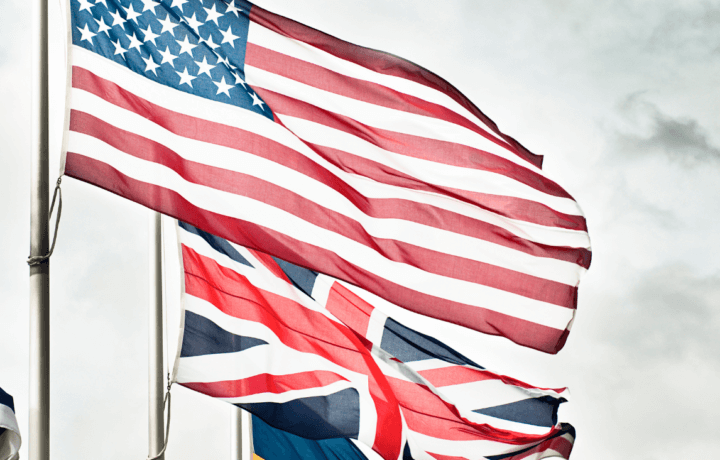In June, Senator Bernie Sanders (I-Vermont) suggested that a 10% cut to the U.S. military budget could have allowed for the money to be spent on those Americans struggling in the wake of the novel coronavirus pandemic. Such calls to rein in the Department of Defense’s (DoD’s) budget are hardly new, but since the start of the Covid-19 outbreak, the amount of money allocated to defense has been put in the spotlight.
The fiscal year 2021 (FY21) budget calls for spending $740.5 billion on defense, the most since the Second World War. In late July, both houses of Congress approved that requested budget, and total military spending, which is estimated to be $934 billion in FY21, is now the second-largest item in the federal budget after Social Security. This also includes the DoD, overseas contingency operations, the VA, Homeland Security, the State Department, and many other agencies and departments that involve national security.
Cutting military costs would require that the DoD reduce its civilian workforce, cut the pay and benefits of soldiers, and shutter military bases.
21st Century Arms Race
The United States has not been alone in increasing spending on defense. China has ramped up its efforts and has surpassed the United States Navy in total number of ships. The DoD has warned that in addition to sheer numbers, the People’s Liberation Army Navy (PLAN) will soon have three or more aircraft carriers in service, as well as numerous amphibious assault ships.
Moscow has also been steadily increasing its efforts to upgrade military hardware. Just last week, according to a report from Tass, Russia’s Defense Minister Sergei Shoigu announced, “Next year, two-thirds of funds will be spent on armament purchases to achieve the planned figures. The deliveries of over 3,400 and the repair of 1,300 basic weapon systems are planned.”
In August, Shoigu called for Russia’s military to bring up to 70% of the equipment used by the troops to modern standards by the end of this year.
Spending in the UK
America’s closest ally is also ramping up its defense efforts, while also modernizing its military. Last month the British government, led by Prime Minister Boris Johnson, approved the largest rise in its defense budget since the end of the Cold War, with £16.5 billion (U.S. $21.9 billion) increase that will be made available for shipbuilding, space, cyber, research and other sectors over the next four years.
“For decades, U.K. government has pared and trimmed our defense budget,” Johnson told Parliament in a statement. “If we go on like this, we risk waking up to discover our armed forces have fallen below the minimum threshold of viability. I have refused to pick up the scalpel yet again. I’ve decided the era of cutting must end, and end now.”
Johnson told MPs that the new four-year funding deal would protect “hundreds of thousands” of jobs and create 40,000 new roles.
Military in Transition
The British military is undergoing a rapid transformation – one that isn’t too dissimilar to what the United States Marine Corps is embarking upon. The USMC has been repositioning itself as a leaner, more mobile force and away from being a “second land army,” and instead is focused on its maritime roots, which include defending ships at sea, island-hopping, and battling for contested coastlines.
The UK has reduced the number of tank regiments, and has even considered ditching the tanks altogether – which is notable as the British Army was the very first to employ the tank on the battlefield more than 100 years ago during the First World War.
Defence Secretary Ben Wallace has suggested that “letting go” of some older weapons and equipment is in order, and it would enable for new investment in modern hardware.
“When I looked across at the armed forces today I saw them with equipment that was out-of-date, I saw our adversaries across the world having better equipment, the ability to attack us and harm us getting wider and wider from our capabilities,” Wallace suggested.
It isn’t just the equipment, but even “who” or rather “what” fills out the ranks of the future British military, as it has been suggested robots could be employed in support roles in the future.
The UK’s Chief of Defence, Gen. Sir Nick Carter, told reports last month, “I suspect we could have an army of 120,000, of which 30,000 might be robots. If I projected forward another ten years, I think we should be in no doubt that warfare will look different, there will be robots on our battlefield in future – there already are today.”
Investment in Technology
How robots may – or even may not – be used is still very much to be determined, but as part of the UK’s budget increase, PM Johnson said funding would go towards restoring Britain as “the foremost naval power in Europe,” with a “renaissance of British shipbuilding across the UK.”
The spending commitment will finance the country’s order of eight Type 26 and five Type 31 frigates, which are under construction in Scotland. Funding would also go towards investments in new technology, including a new center dedicated to artificial intelligence (AI); the creation of a national cybersecurity force, which could be used to combat terrorist and extremist groups, organized crime, and hostile state actors; and a new Royal Air Force (RAF) space command that could launch British satellites. The goal of the latter program is to have the first rocket launched from Scotland in 2022.
“From aerospace to autonomous vehicles, these technologies have a vast array of civilian applications opening up new vistas of economic progress, creating 10,000 jobs every year – 40,000 in total – leveling-up across our country and reinforcing our union,” Johnson added.




